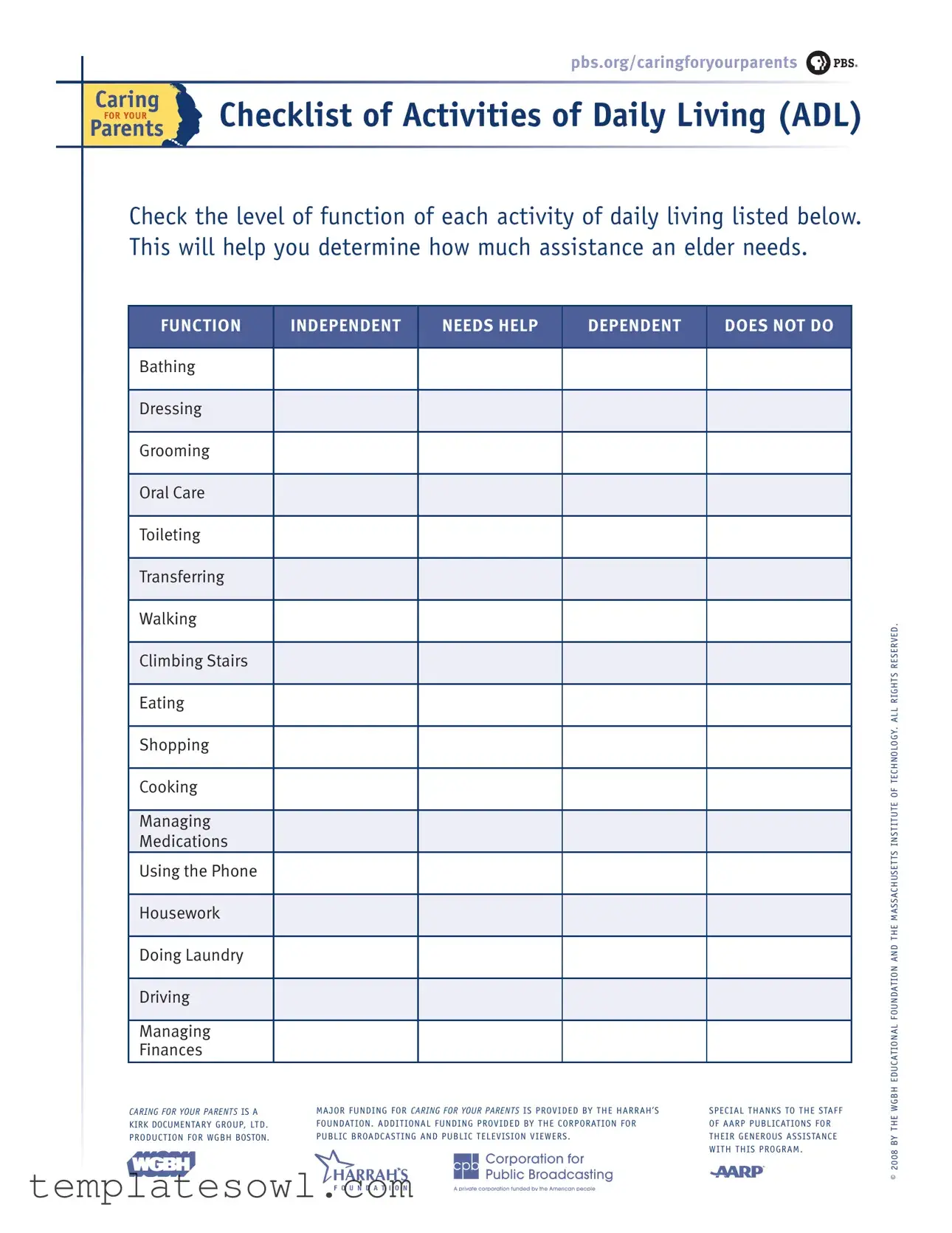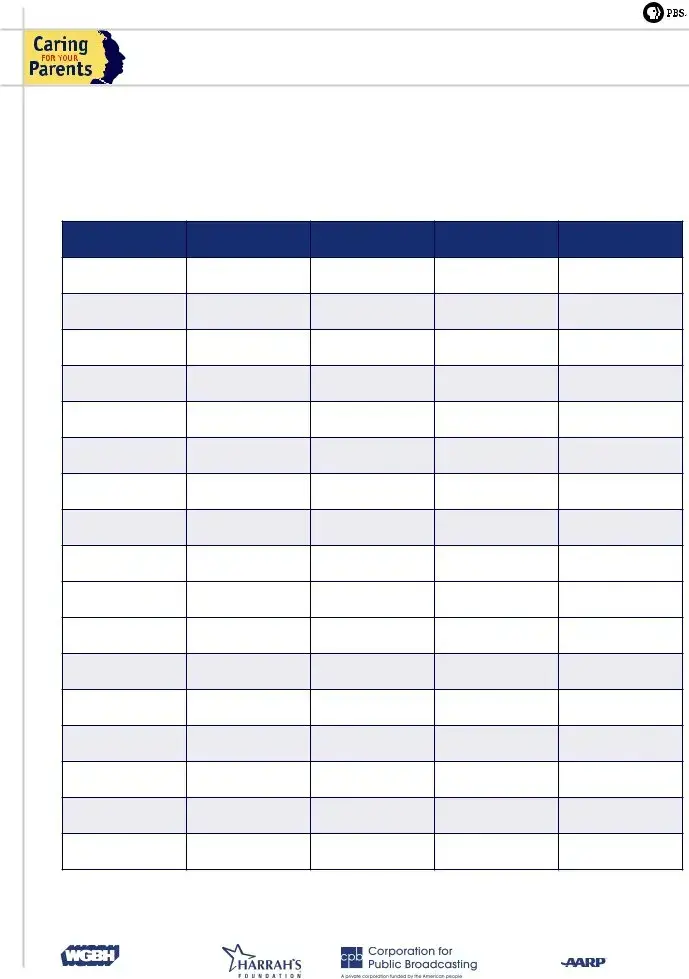What is the purpose of the Checklist Daily Living form?
The Checklist Daily Living form is designed to assess an elder's ability to perform daily activities. By checking how well individuals manage tasks such as bathing, dressing, and cooking, caregivers can determine the level of assistance required. This assessment helps in planning appropriate care and support needed to enhance the elder's quality of life.
How do I use the Checklist Daily Living form?
To use the form, review each activity of daily living listed. For each activity, identify whether the elder is "Independent," "Needs Help," "Dependent," or "Does Not Do." Record your observations to paint a clear picture of their capabilities. This information is invaluable for making care decisions and communicating needs with family members or health care professionals.
Who should fill out the Checklist Daily Living form?
This form is typically filled out by caregivers, family members, or health care professionals familiar with the elder's day-to-day functioning. Those closely observing the elder will provide the most accurate assessments. It’s important to consider the elder’s own insights, where possible, to address preferences and concerns effectively.
What should I do with the completed Checklist Daily Living form?
After completing the form, use the information to discuss care needs with family members or health care providers. It can serve as a foundation for creating a more personalized care plan. Keep the completed form for reference and update it regularly to reflect any changes in the elder's functional abilities.

